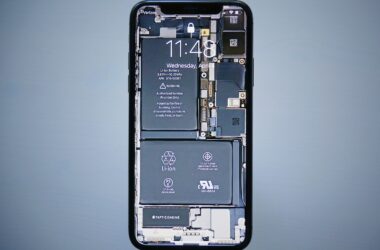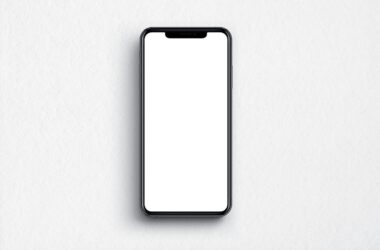Introduction
Welcome to our guide on managing iPhone data syncing issues with iCloud. For many iPhone users, seamless data syncing is crucial. Whether it’s keeping your photos, contacts, or documents up to date across all your Apple devices, iCloud plays a vital role in ensuring everything stays in sync effortlessly.
However, when iCloud syncing issues occur, they can be incredibly frustrating. Imagine taking new photos on your iPhone, only to find they’re not appearing on your iPad, or discovering that important contacts haven’t updated on your Mac. These disruptions can interfere with your workflow and cause unnecessary stress.
In this post, we’ll delve into the common problems users face with iCloud syncing and provide practical steps to resolve these issues. By the end, you’ll be equipped with the knowledge to keep your data synchronized smoothly and efficiently.
1: Understanding iCloud Syncing
iCloud syncing is a feature that allows iPhone users to keep their data up-to-date across all their Apple devices. This means that any changes made on one device, like adding a new contact or updating a document, are automatically reflected on all other devices connected to the same iCloud account.
The purpose of iCloud syncing is to provide a seamless and integrated experience for users, ensuring that their data is consistent and accessible, no matter which device they are using. This feature is especially important for those who rely on multiple Apple devices in their daily lives, as it eliminates the need to manually update information across each device.
Key data types that sync with iCloud include:
- Photos and Videos: Your entire photo library, including edits and albums, is available on all your devices.
- Contacts: Keep your contact list up-to-date and consistent.
- Calendars and Reminders: Ensure your schedules and to-do lists are synchronized.
- Documents and Data: Access your files from apps like Pages, Numbers, and Keynote on any device.
- Messages: Sync your iMessages across all your Apple devices.
By understanding what iCloud syncing is and the variety of data it manages, you can appreciate its role in maintaining a cohesive digital experience. In this section, we introduce the primary keywords: iPhone data syncing and iCloud syncing issues, which will be crucial as we explore the common problems and solutions in the upcoming sections.
2: Common iCloud Syncing Issues
Despite its many advantages, iCloud syncing can sometimes run into problems that disrupt the seamless experience it promises. Let’s discuss some of the most common iCloud syncing problems users face and explore how to resolve them.
One prevalent issue is data not updating across devices. You might find that changes made on your iPhone, such as adding a new contact or taking a photo, don’t appear on your iPad or Mac. This can be particularly frustrating when you rely on your devices to stay synchronized for work or personal use.
Another common problem is sync errors and conflicts. Sometimes, you may receive error messages indicating that your data cannot be synced due to conflicts between devices. This often happens when multiple devices try to update the same data simultaneously, leading to confusion and errors in the syncing process.
Users also frequently encounter missing or duplicated data. For example, you might notice that some of your photos are missing from your iCloud Photo Library or that contacts appear multiple times in your address book. These issues can clutter your data and make it difficult to find the information you need.
To address these problems, it’s essential to understand and use the right troubleshooting steps. Here are some long-tail keywords to guide you through the solutions: Common iPhone iCloud syncing errors and solutions and iPhone not syncing with iCloud: How to resolve. These phrases will help you find detailed guides and troubleshooting tips online.
By identifying these common iCloud syncing issues and learning how to resolve them, you can ensure a smoother experience with your Apple devices. In the next section, we’ll provide a step-by-step guide to troubleshooting these problems effectively.
3: Troubleshooting Steps
To resolve iCloud syncing issues on your iPhone, follow these step-by-step troubleshooting steps. These solutions will help ensure that your data syncs smoothly across all your Apple devices.
3.1 Ensure iCloud is set up correctly on the iPhone
First, make sure iCloud is properly set up on your iPhone. Go to Settings > [Your Name] > iCloud. Ensure that the toggles for the data types you want to sync, such as Photos, Contacts, and Calendars, are turned on. If any are off, turn them on and see if this resolves the issue.
3.2 Check iCloud storage availability
Insufficient iCloud storage can prevent data from syncing. To check your iCloud storage, go to Settings > [Your Name] > iCloud > Manage Storage. If you’re running low on space, consider upgrading your storage plan or freeing up space by deleting unnecessary files and backups.
3.3 Verify internet connection
A stable internet connection is essential for iCloud syncing. Ensure your iPhone is connected to Wi-Fi or has a strong cellular data connection. You can check this by opening a web page or streaming a video to verify connectivity.
3.4 Sign out and sign back into iCloud
Signing out and back into iCloud can refresh the connection and resolve syncing issues. To do this, go to Settings > [Your Name], scroll down, and tap Sign Out. After signing out, restart your iPhone, then sign back into iCloud and check if the syncing issue is resolved.
3.5 Update iOS to the latest version
Running the latest version of iOS can fix bugs and improve iCloud functionality. To check for updates, go to Settings > General > Software Update. If an update is available, download and install it. After updating, verify if your data syncs correctly.
By following this step-by-step guide to fixing iCloud sync issues on iPhone, you should be able to resolve most common problems. Troubleshooting iCloud sync problems on iPhone can seem daunting, but these steps are designed to be straightforward and effective.
In the next section, we’ll cover some advanced solutions for more persistent issues, ensuring you have all the tools you need to maintain smooth iCloud syncing.
4: Advanced Solutions
If the basic troubleshooting steps didn’t resolve your iCloud syncing issues, it’s time to move on to some advanced solutions. These tips can help address more persistent problems and ensure your data syncs seamlessly across your devices.
4.1 Reset Network Settings
Resetting your network settings can resolve connectivity issues that might be interfering with iCloud syncing. To reset your network settings, go to Settings > General > Reset > Reset Network Settings. Keep in mind that this will erase your Wi-Fi passwords, so you’ll need to reconnect to your Wi-Fi networks afterward. After the reset, check if your iCloud data syncs properly.
4.2 Restore iPhone from a Backup
If your syncing issues persist, restoring your iPhone from a previous backup might help. This process can fix underlying software problems that affect iCloud syncing. To restore your iPhone, connect it to your computer and open iTunes or Finder. Select your device, then click on “Restore Backup.” Choose the most recent backup and follow the on-screen instructions. This method can resolve both iPhone backup issues and iCloud syncing problems.
4.3 Contact Apple Support for Unresolved Issues
If none of the above steps work, it’s time to contact Apple Support. They can provide more specialized assistance and help diagnose any deeper issues with your iCloud account or device. You can reach Apple Support through the Apple Support app, the Apple website, or by visiting an Apple Store. Mention your specific problem, and they will guide you through additional troubleshooting steps or repair options.
By following these advanced troubleshooting tips, you can tackle more complex iCloud syncing issues and ensure your data is consistently up-to-date across all your devices. Use these solutions alongside basic troubleshooting to cover all potential problems.
When dealing with iCloud syncing problems, always remember to consider iPhone backup issues and look for iCloud troubleshooting tips to expand your knowledge and find new solutions. With patience and persistence, you can maintain a smooth and efficient syncing experience on your iPhone.
In the conclusion, we’ll summarize the key points and provide some final tips to keep your iCloud syncing running smoothly.
Conclusion
In this post, we’ve explored the importance of iCloud syncing and the common issues that can arise. From data not updating across devices to sync errors and missing or duplicated data, iCloud syncing problems can be frustrating and disruptive. However, by following the steps outlined in this guide, you can effectively troubleshoot and resolve these issues.
To recap, we discussed basic troubleshooting steps such as ensuring iCloud is set up correctly, checking iCloud storage availability, verifying your internet connection, signing out and back into iCloud, and updating iOS to the latest version. For more persistent problems, advanced solutions like resetting network settings, restoring your iPhone from a backup, and contacting Apple Support were provided.
For maintaining smooth data syncing, here are some final tips:
- Regularly check iCloud settings and storage: Ensure that the correct data types are enabled for syncing and that you have enough storage available.
- Keep your iPhone software up to date: Regular updates often include fixes for bugs and improvements in functionality.
We encourage you to share your own experiences and solutions in the comments section. Your insights can help others facing similar issues.
If you found this guide helpful, follow our blog for more tips and troubleshooting guides. Don’t forget to share this post with others who might be facing iCloud syncing issues. Together, we can help everyone achieve a seamless and efficient digital experience with their iPhones and iCloud.







